Being one of Africa’s smallest countries hasn’t stop Benin from harboring quite a few unique gems, all somewhat of a closely kept secret which makes it a prized destination for adventure travelers like myself. Entering Benin by road via the north as opposed to the airport in the south places you smack in the heart of Somba country, aka the land of the Somba tribe (also called Betammaribe) and their unique fortified ‘Tata’ houses (as seen in my latest post in Togo).
The region is of great natural beauty and one of the country’s main tourist attractions. Life here has barely changed and locals mainly live on subsistence agriculture, keeping their tribal traditions alive and pure. Up until a few decades ago they were almost totally unknown to the Western world and living like they had for hundreds of years – hunting with bows and arrows, barely wearing any clothing and living in mud fortresses.
Contrary to other African communities, the Somba don’t live in close proximity to one another and instead build their houses in the middle of their fields, far from everyone else. A few have move on to a more modern house aesthetic (corrugated roofs are a sign of prosperity) but that’s about all that has evolved…that and the addition of some clothing.
The town of Boukoumbé is the launching pad to the region and the brand new (still unfinished) hotel Tata Koubetti in its center is the ideal pied-a-terre to explore it. The hotel was built in the traditional way of the Tatas which you can see everywhere around you and offers a very comfortable way to see how local people live.
The ground floor is usually reserved for livestock but here will include the kitchen, a common area and a few extra rooms. You need to take the staircase to access the living quarters and finished section of the hotel just like you would in a real Tata house.
The clean and comfortable rooms are inside each tower and a hole in the middle of the terrace floor allows you to take a peek on the ground floor below you (in a traditional house, these holes serve to defend the house against the enemies as you can easily surprise and shoot arrows through them).
The ladder is to access the top living floor (or rooftop).
It’s here that they would dry their crops for storing them and sleep under the stars when it got too hot inside. It also gives a splendid 360 view of the surroundings.
Down the road from the hotel lies a super laid-back haven, the hotel restaurant and bar, which welcomes you in a leafy courtyard surrounded by huge mango trees.
The local menu offers tasty dishes and specialties such as Fonio, a special kind of millet which I ate served as couscous with wild rabbit.
Small town life is seen right outside the hotel’s property, with chop bars, churches, NGO’s offices, and schools spread out on each sides of the main deep orange dirt road. The school’s external walls are brightly decorated with AIDS prevention cartoons – the most effective way of passing the message in these parts where visuals are more understood than lengthy pamphlets.
Quaint chop bars offer the usual staples of fufu and banku.
My delicious lunch of fufu and light soup with beef was accompanied by a sweet Moka – a local coffee flavored soft drink.
One last look at the hills to the north before starting our way down south…
The last northerly visit is to one of the fascinating Taneka villages which are molded on to the rocky hillside, and are quite a mission to get to.
From a distance they may appear just like any other African villages, but standing in the middle of them will reveal quite a few particularities.
Close knit groups of small circular grass roofed huts are centered around a common courtyard where cooking and meetings occur.
All the buildings are in fact a lot smaller than initially thought…
The inhabitants arrived here in the second half of the 18th century from different regions of Togo, Ghana, Burkina Faso and Niger, all running away from the slave hunters.
They saw a natural fort in these steep and rocky hills with a great view of the surrounding area and have settled there since, keeping their respective tribal traditions alive much like the Somba people in the north.
We arrived mid-morning and the village was practically deserted, the men and women having gone to the fields to work on their crops. Only signs of activity were pots simmering over fire, this one filled with beer made out of millet.
The only woman I met was busy crushing hot peppers on a stone mortar.
Tomatoes are added to make the traditional sauce, often eaten simply with boiled yams.
Another pot contained a natural medicine for malaria – the knowledge of all the plants and herbs is a traditional and very precious one as they are too poor to afford western medicine.
Kids are left with their grandmothers while the parents are out in the fields all day with little to do but hang out, playing with sticks and stones.
The fetish priest is the second highest figure in the village and has kept the tradition of wearing only a leather loin cloth as clothing.
Smoking from a long hand carved pipe is a favorite pass time of his and many others. He was all smiles as I gave him money to buy a bit of tobacco…just made his day he said, ah!
The highest figure in the village is unsurprisingly the King with whom I’ve had the pleasure of an audience. I was able to ask him all my questions about the village, their customs and ancestry and learn a great deal about their lives and strong beliefs in keeping things as they’ve been for hundreds of years…
Back on the road, I stopped at a roadside marble vendor stand just to get a shot of these overloaded motorcycles…funny or ingenious?
Another delectable lunch, this time extra special as I found cooked cheese and kontomire (spinach sauce) along with a very special banku. With a cold beer on the side this was well worth the $1.50!
Benin is the birthplace of Voodoo and it remains to this day the official religion of the country as well as an important part of Beninese life. Temples and roadside shrines abound, none as famous as the monstrous Dankoli shrine, the most important fetish in the country.
To an outsider, the shrine is nothing but a rotting pile of blood, bones, and feathers with a tree stump at its center to hang various animal parts. To locals though, this is where they come to speak directly with the spirits who will bring their messages to the gods. I witnessed a few requests, consisting mainly of hammering a wooden peg into one of the two shrines (one male and one female) while making silently your request, then pouring red palm oil on to your stake before spitting a mouthful of a specially prepared rum at your stake while constantly repeating your request. The same pouring and spitting must be performed three more times on a giant wooden penis sticking out of the ground and two holes in the ground called ‘the twins’.
Of course, gods need a little incentive so you must also put a bit of money next to your stake, pouring more oil and rum onto it, and your request should be answered within the year… If it is, you must return to the shrine and offer a sacrifice, usually chickens which were being slaughtered all around me… Let’s say I didn’t stick around too long!
A visit to Benin wouldn’t be complete without stopping at the seat of the once powerful Kingdom of Dahomey (1800s–1894). The city of Abomey was the capital of the Dahomey Empire and boast many ruined temples and royal palaces (listed as UNESCO World Heritage site) worth a visit. Photos of the palaces were prohibited but I did get a good shot of the statue of King Behanzin, Abomey’s last independent ruler.
Heading always south and finally reaching the coast, we get to the city of Ouidah, the spiritual center of the Voodoo religion. Just outside the center you can find the Sacred Forest of Kpasse, a quiet oasis dotted with bronze statues of gods which you can also see scattered around town. You’ll hear great stories of magical trees and other legends.
The Route des Esclaves was the road by which slaves were taken to the beach (and then the boats) and has numerous statues and monuments along its 4 km.
The most famous monument is without a doubt the ‘Door of No Return’, a memorial arch set on the beach where boats used to come and collect the slaves to take them away forever.
The beach in Ouidah is supposedly the nicest in the country.
Nearby were tons of coconut vendors waiting to quench my thirst, and I’ve also learned to indulge in that amazingly fresh and tender coconut meat found in the middle.
I kept the most popular attraction for the end – the Python Temple. In Voodoo the snake represents the god Da (or Dangbe) who is the bringer of life and fertility and the favorite god of Ouidah, hence a whole temple is dedicated to a large group of harmless Royal Pythons.
The snakes are used in various Voodoo ceremonies held at the temple, and in between make for some pretty entertaining photo shoot with tourists! 🙂

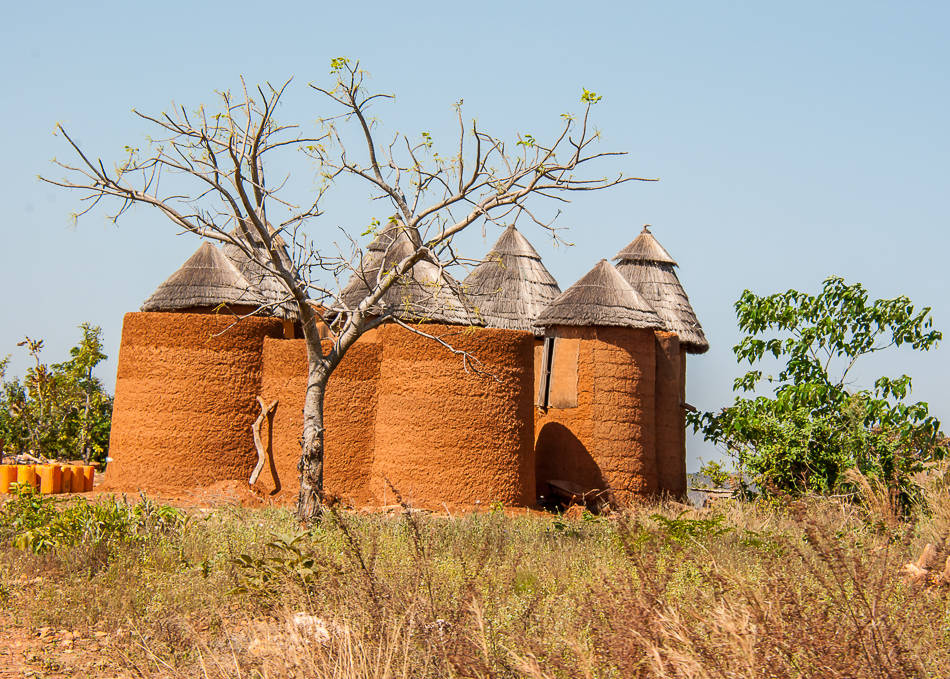


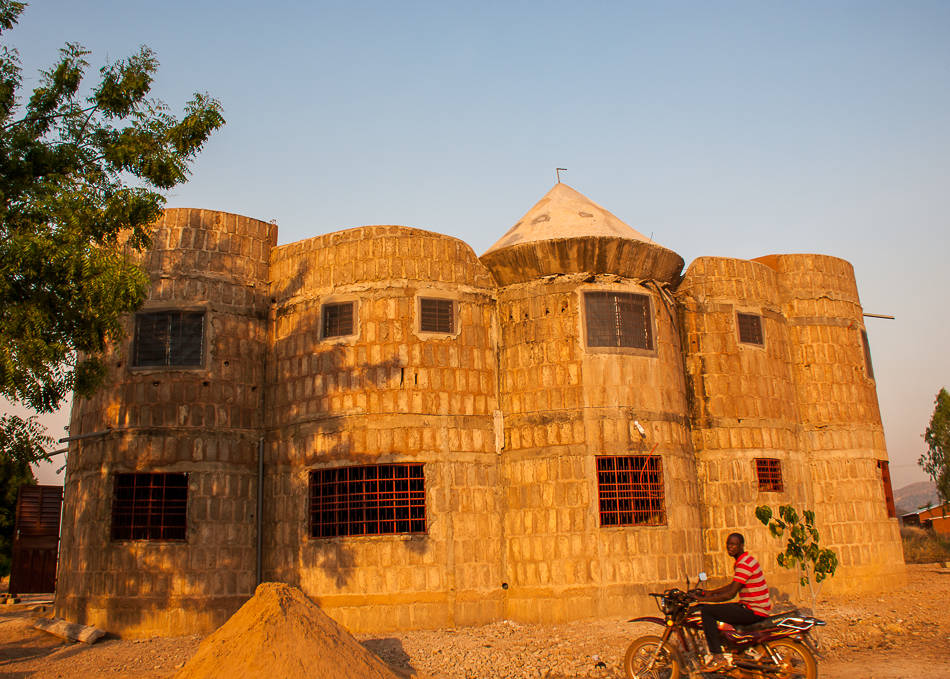


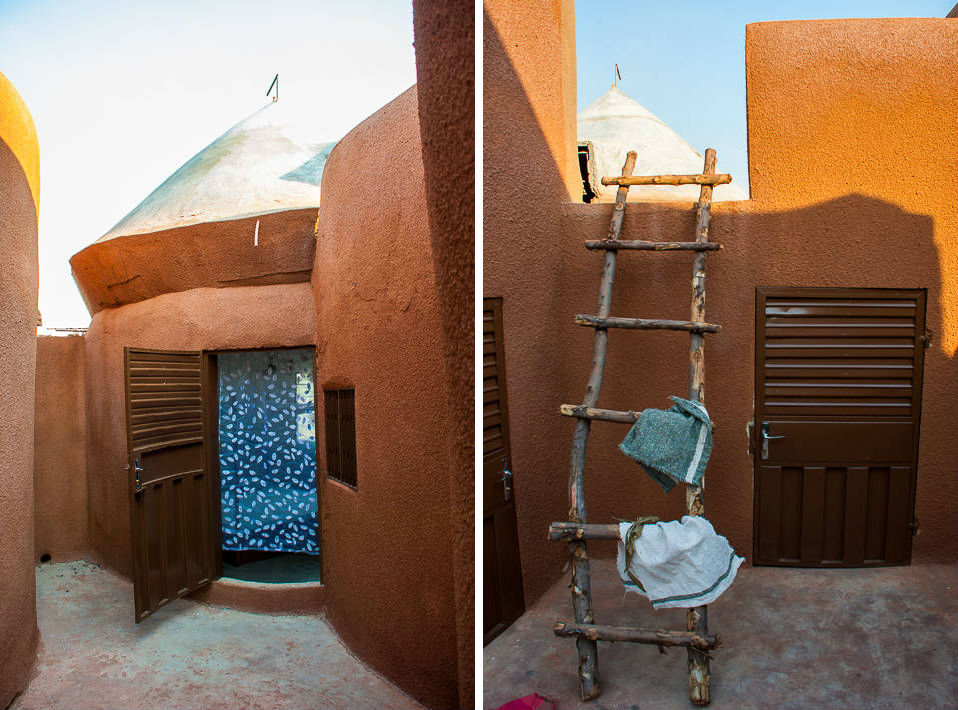
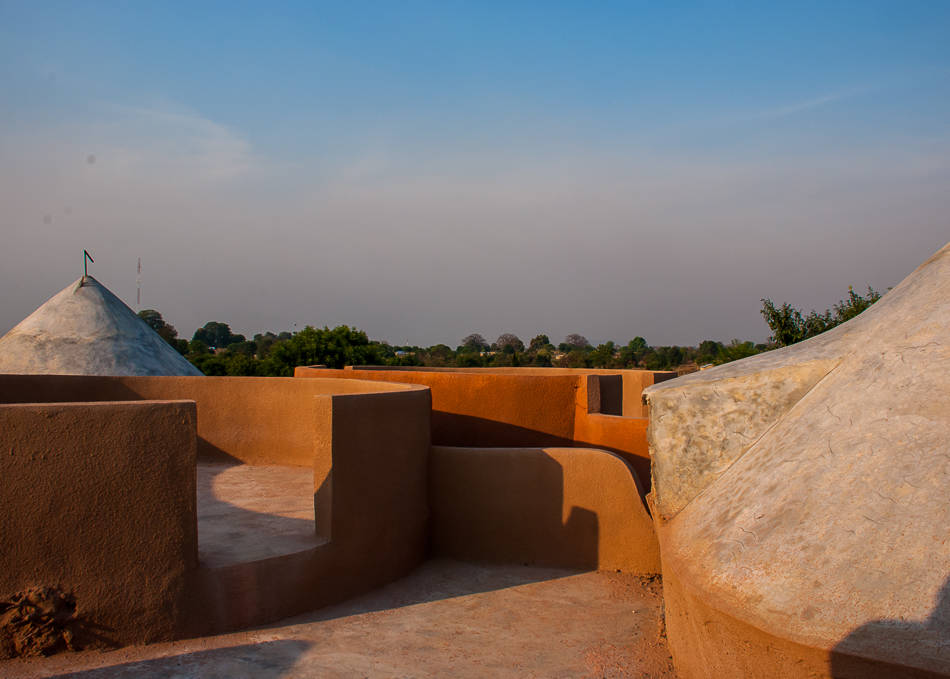
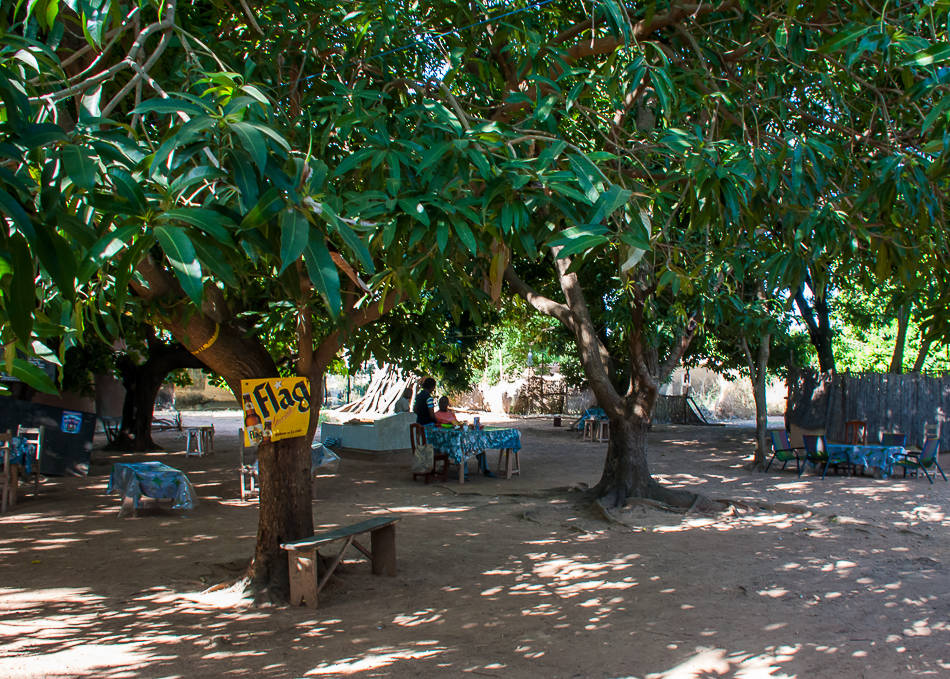
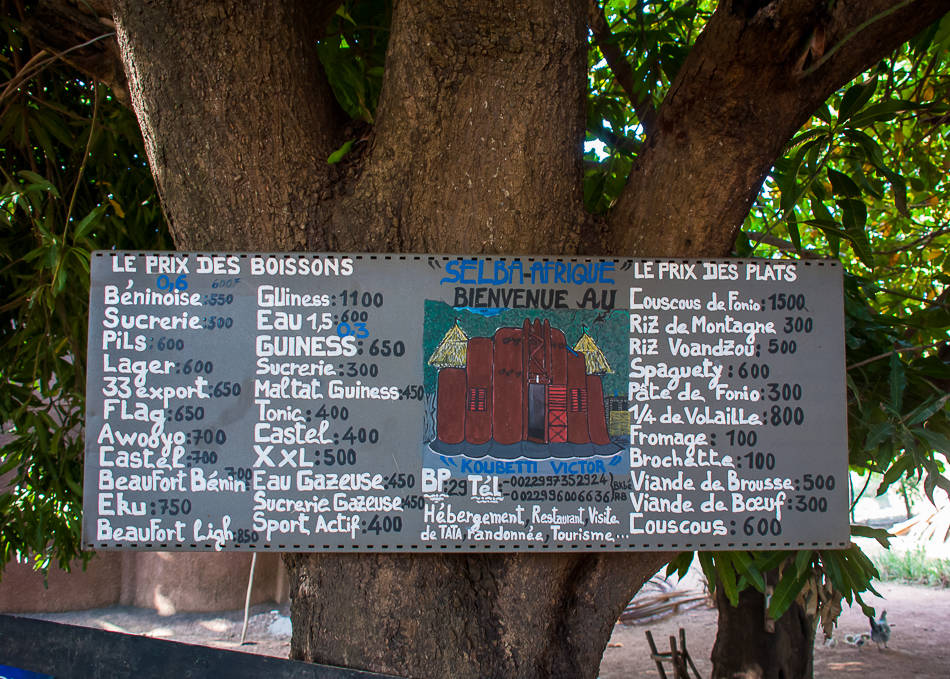
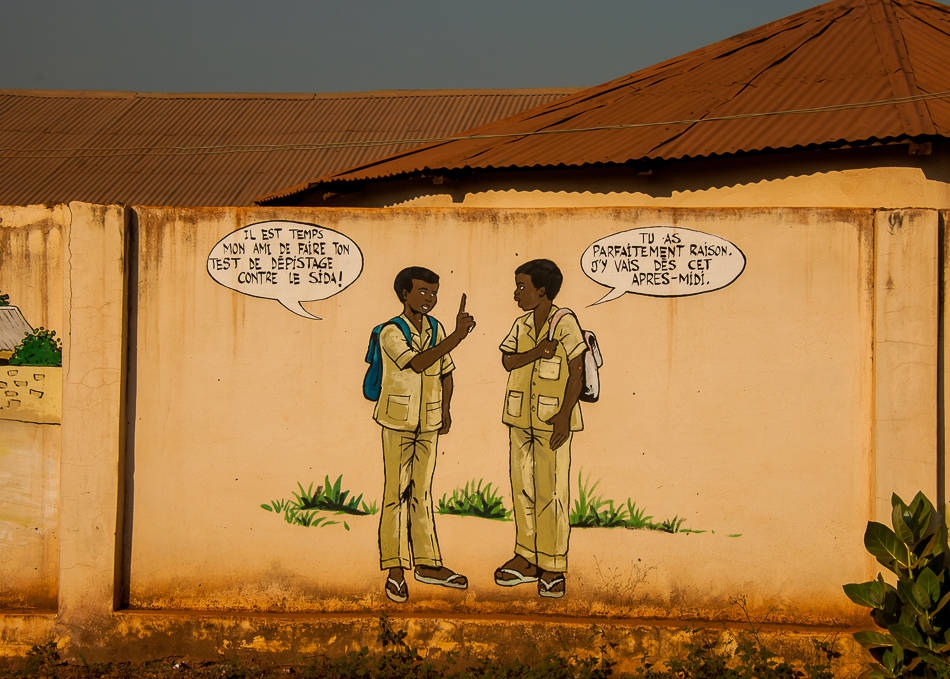
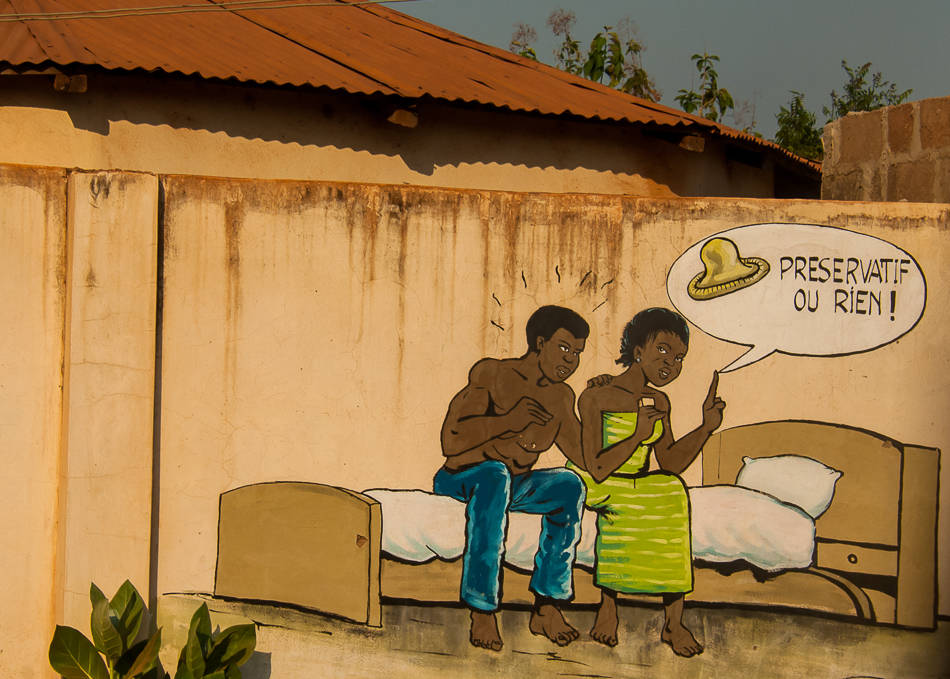
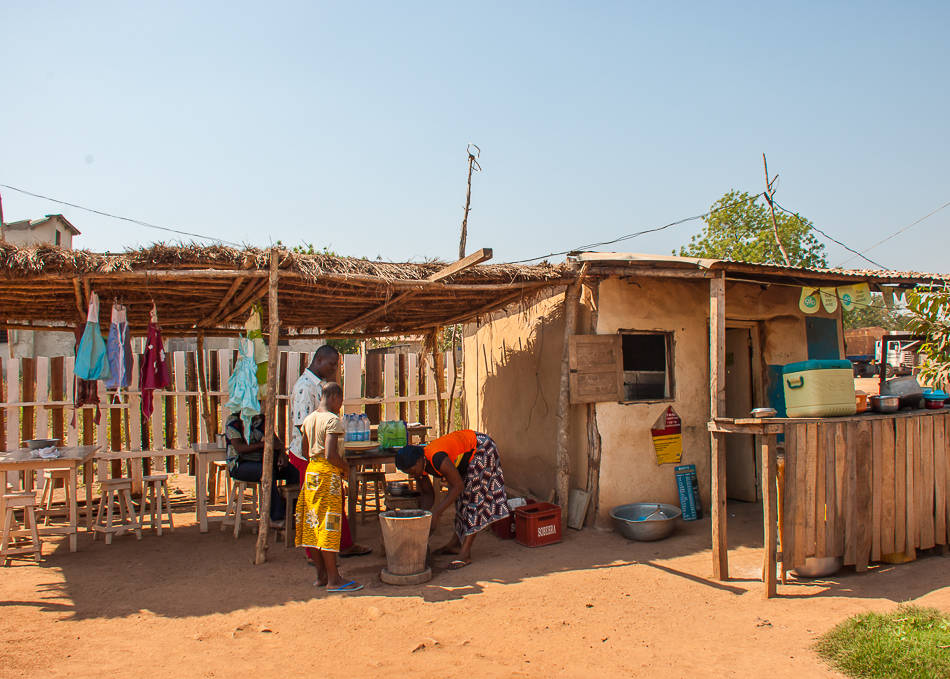


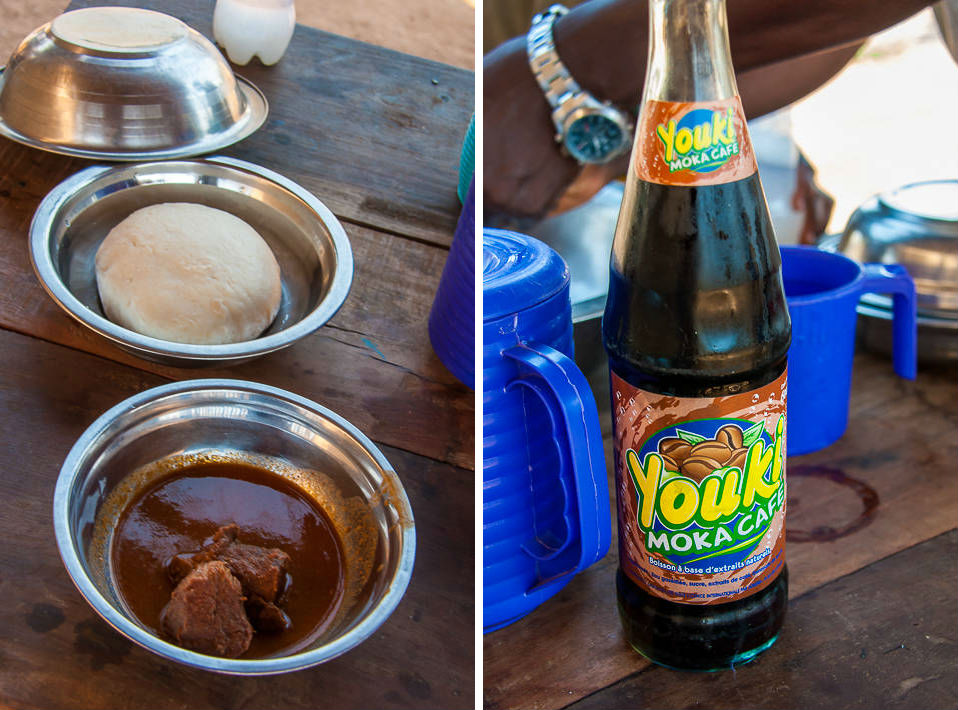

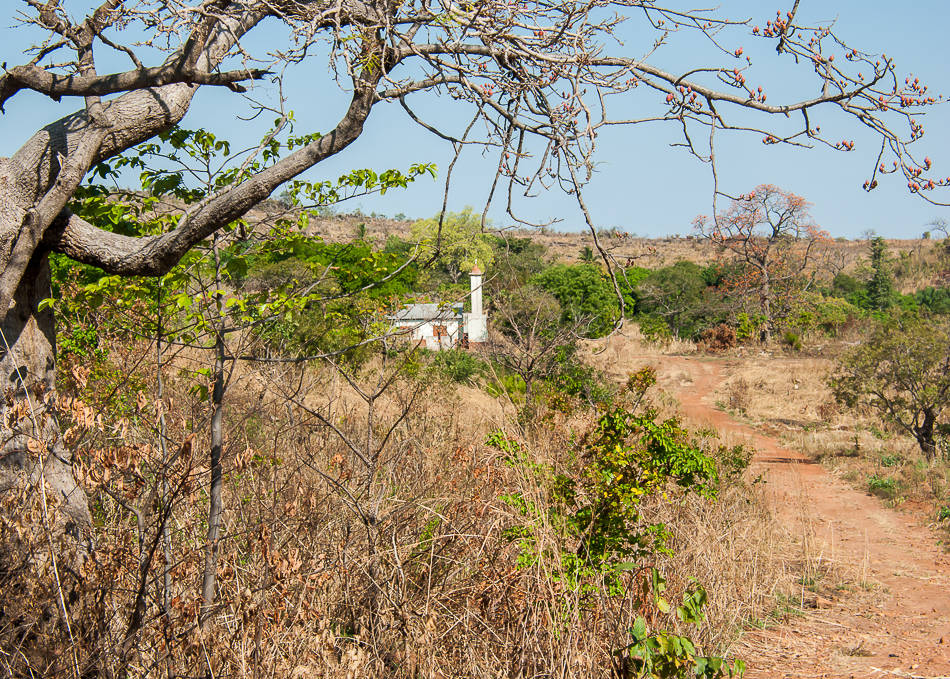
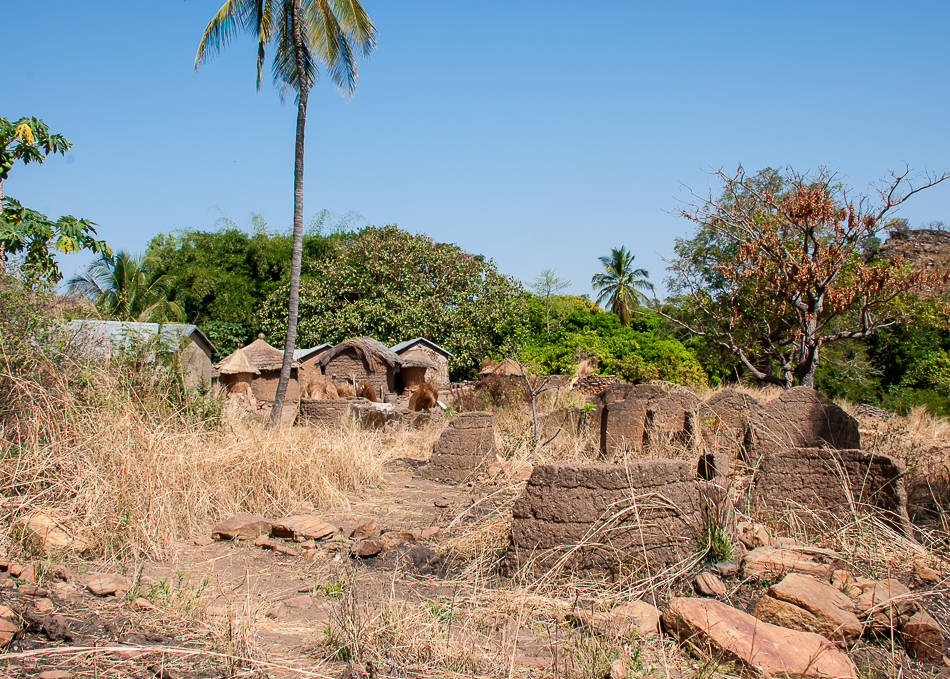




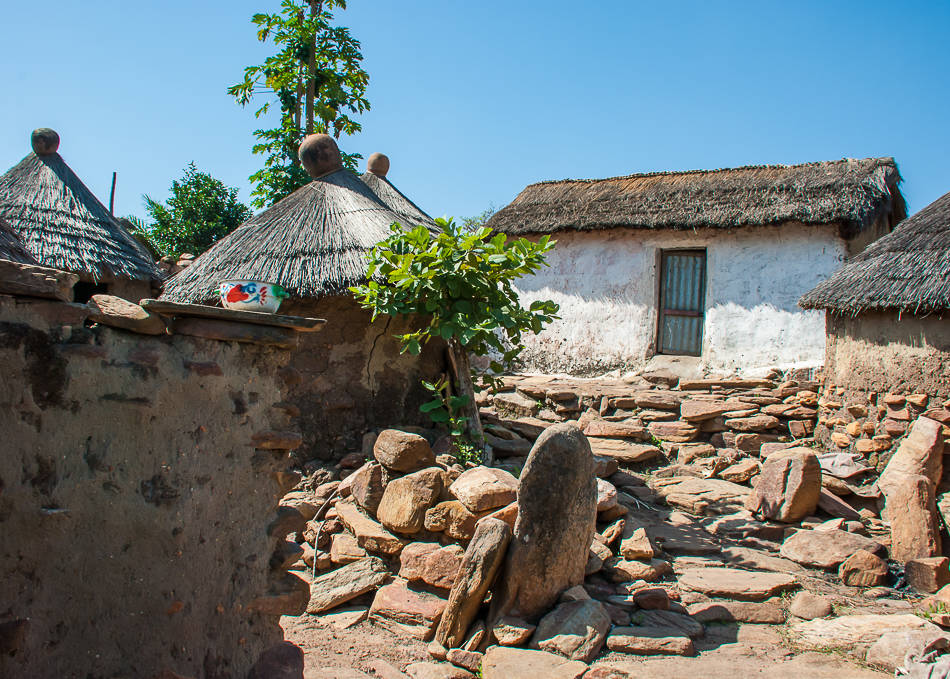


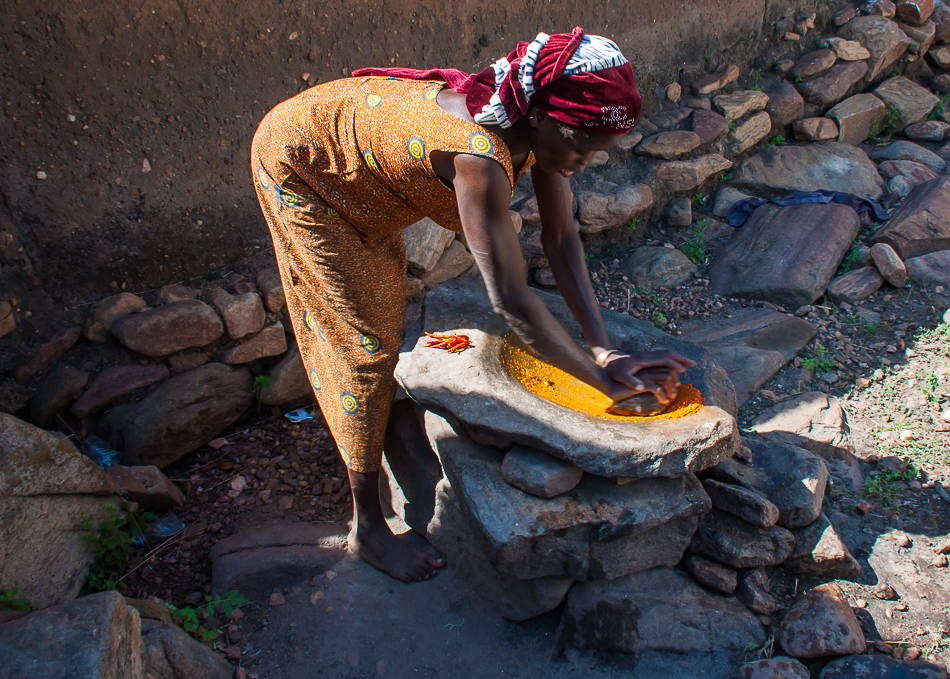
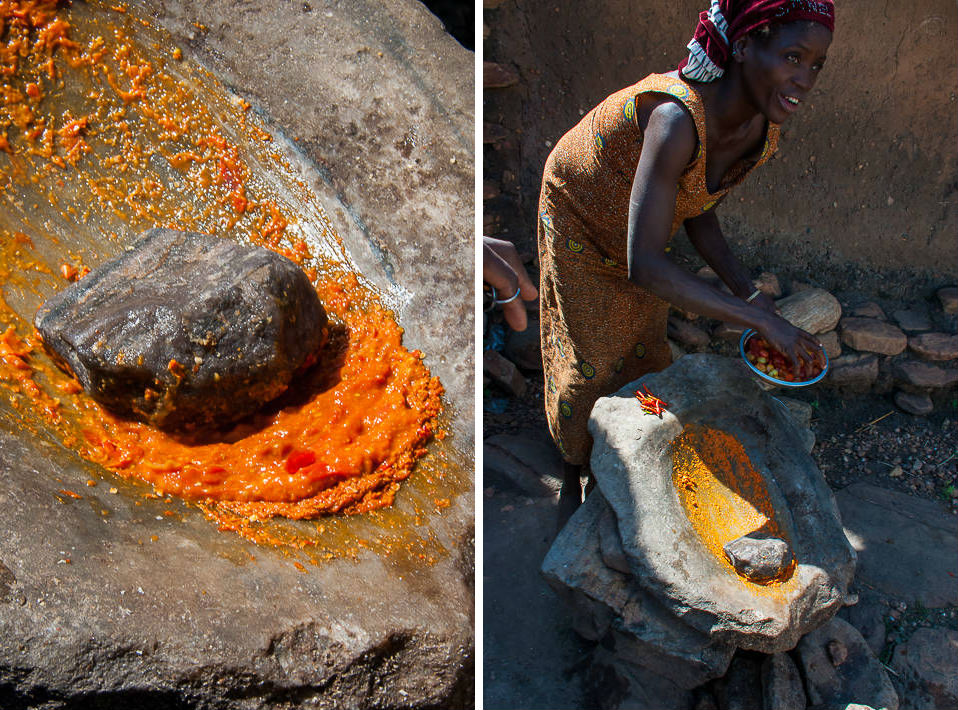
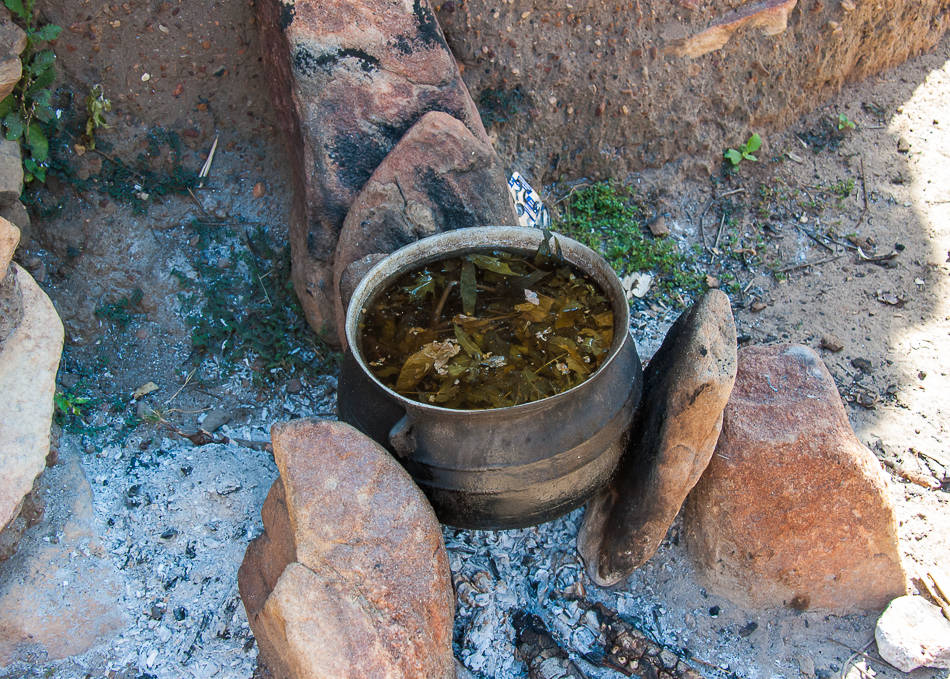

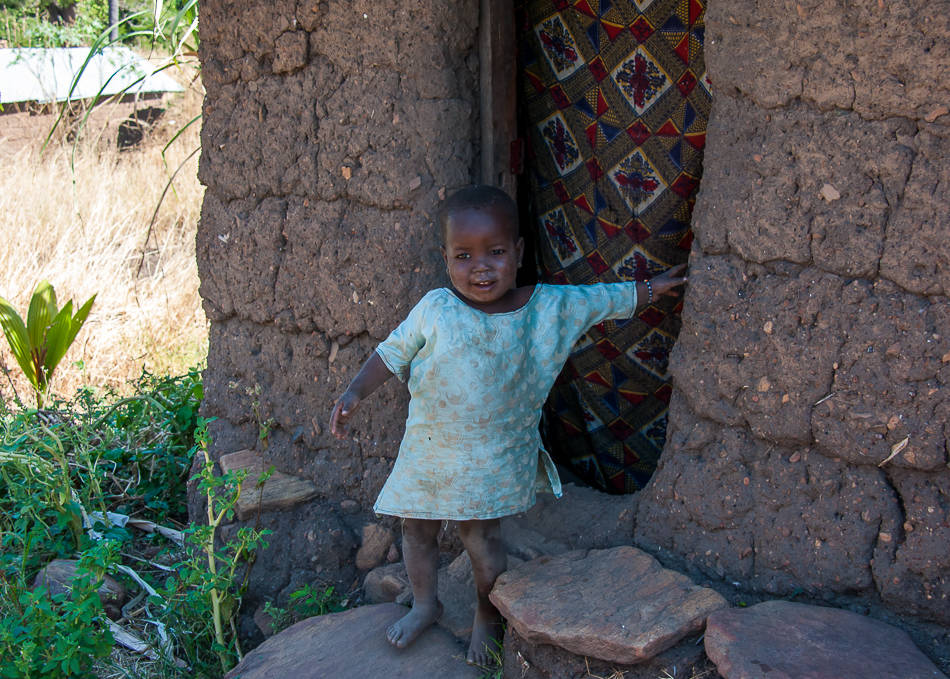
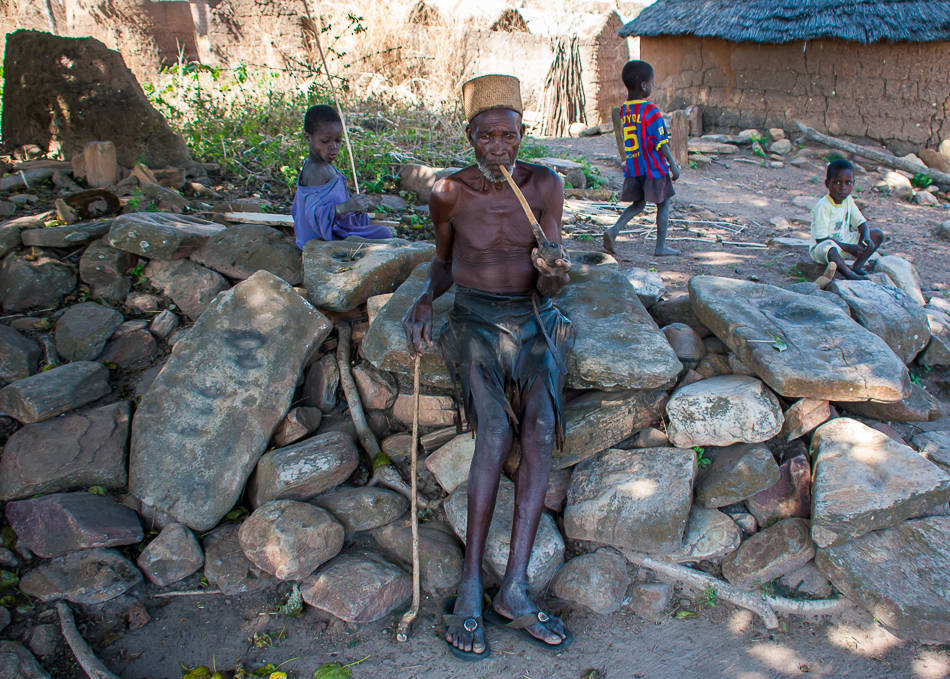
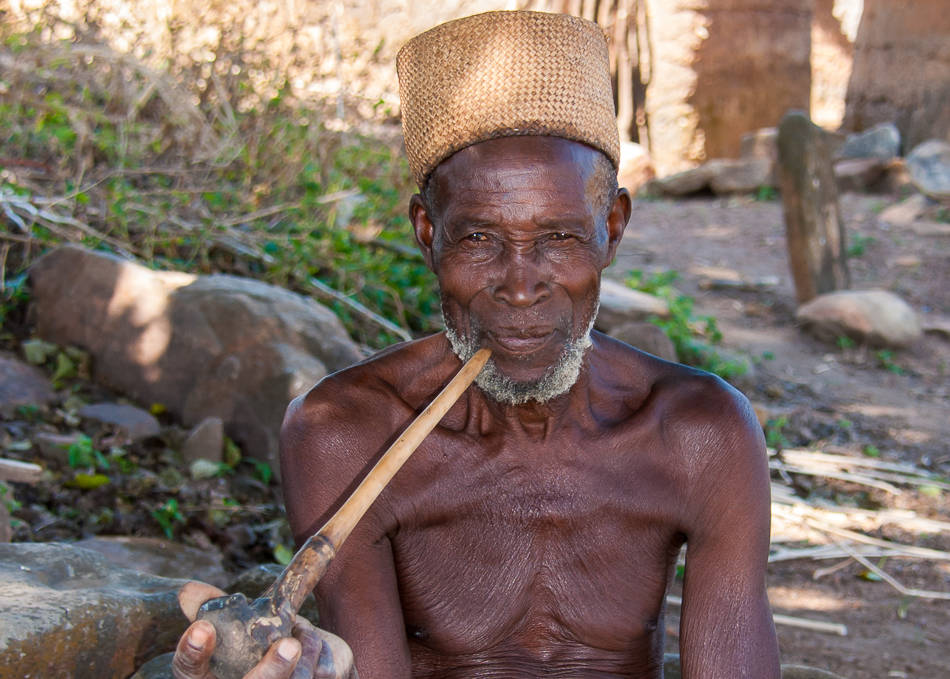
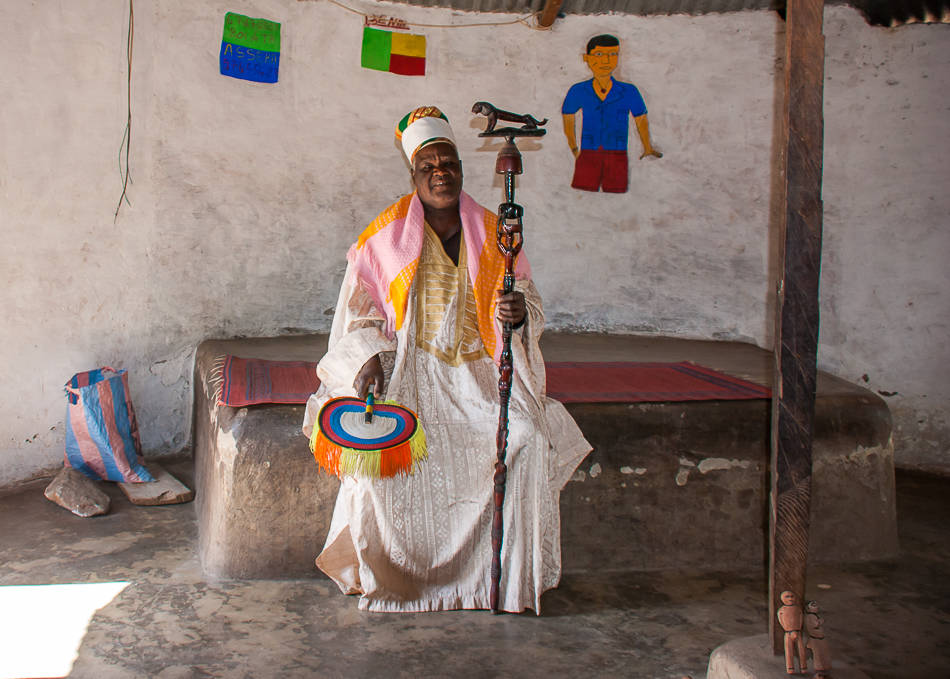
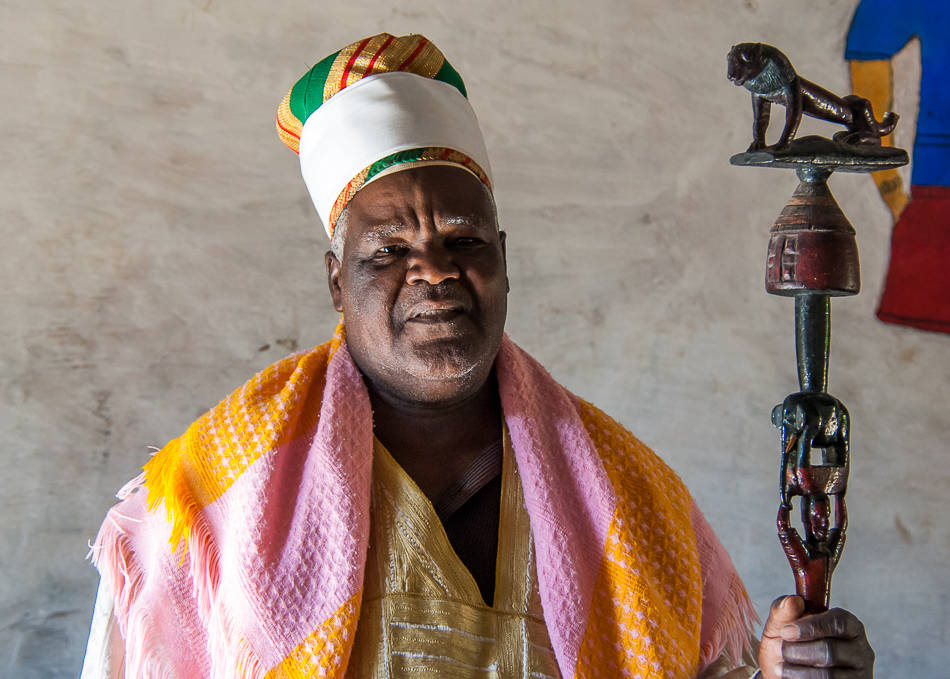
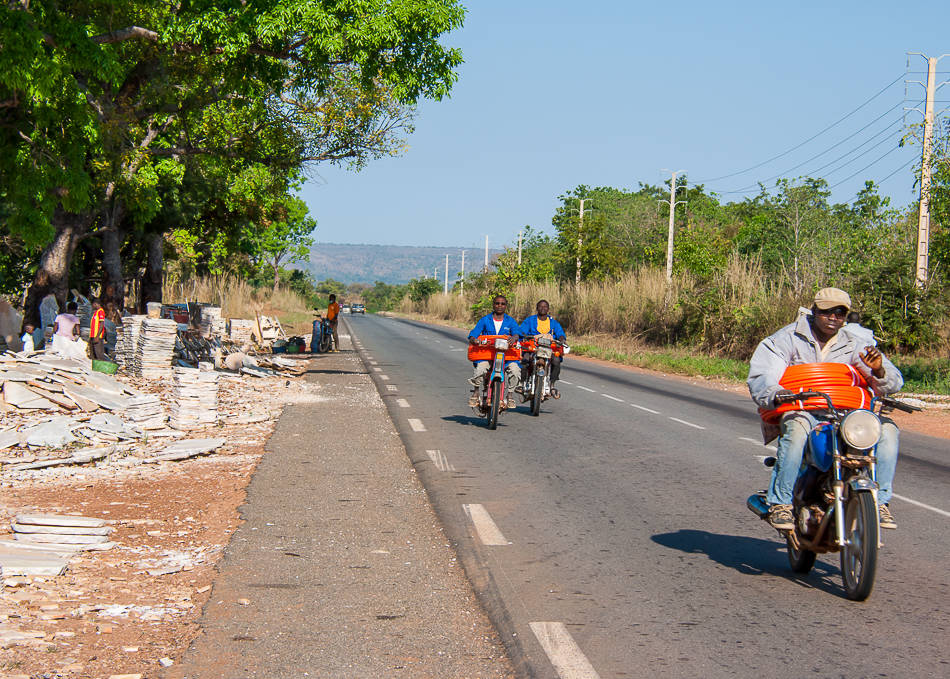
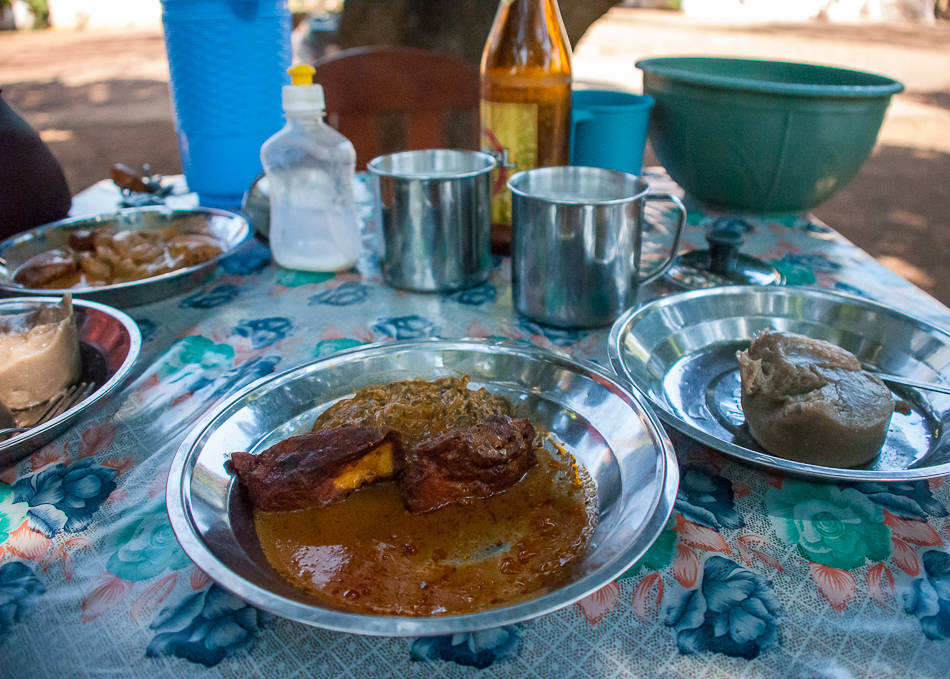
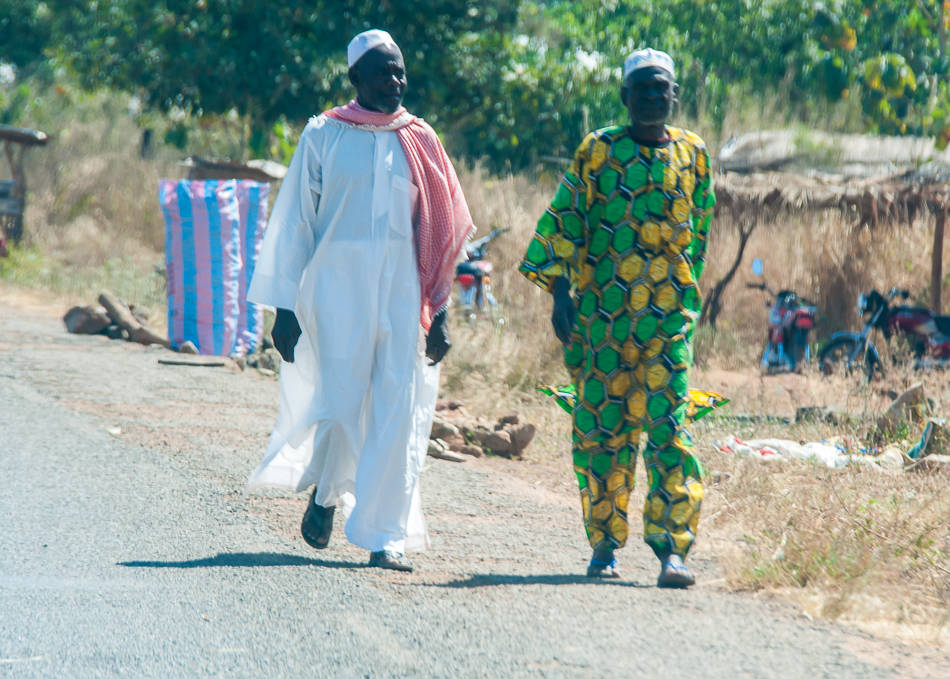
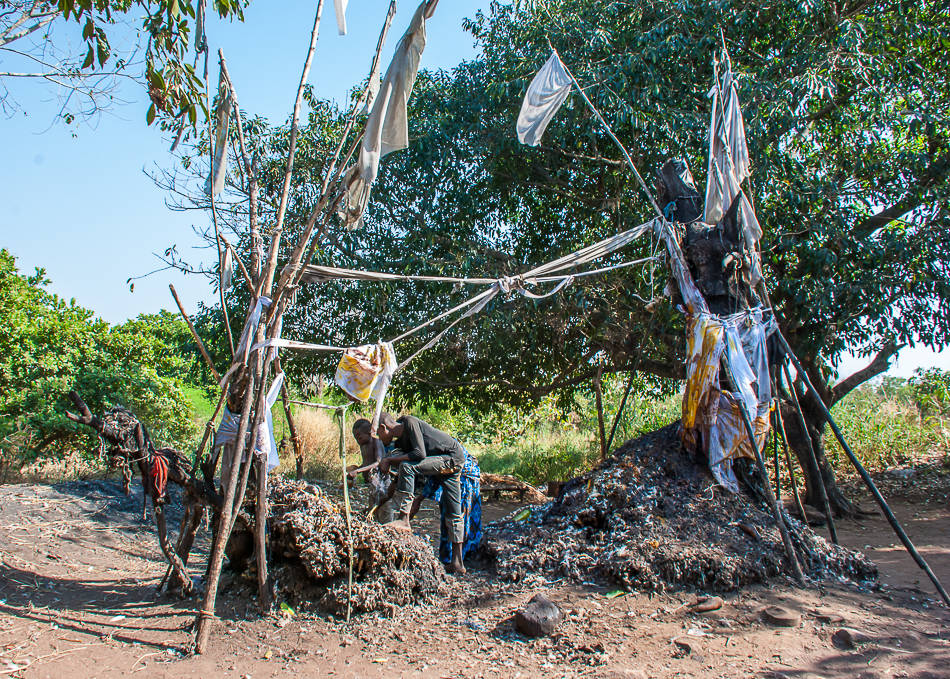
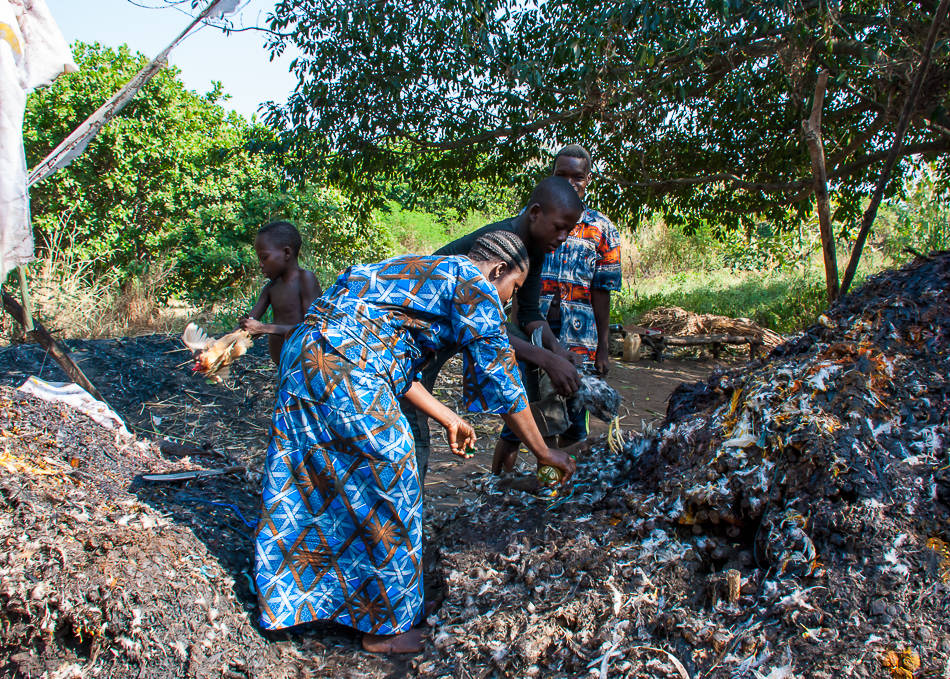
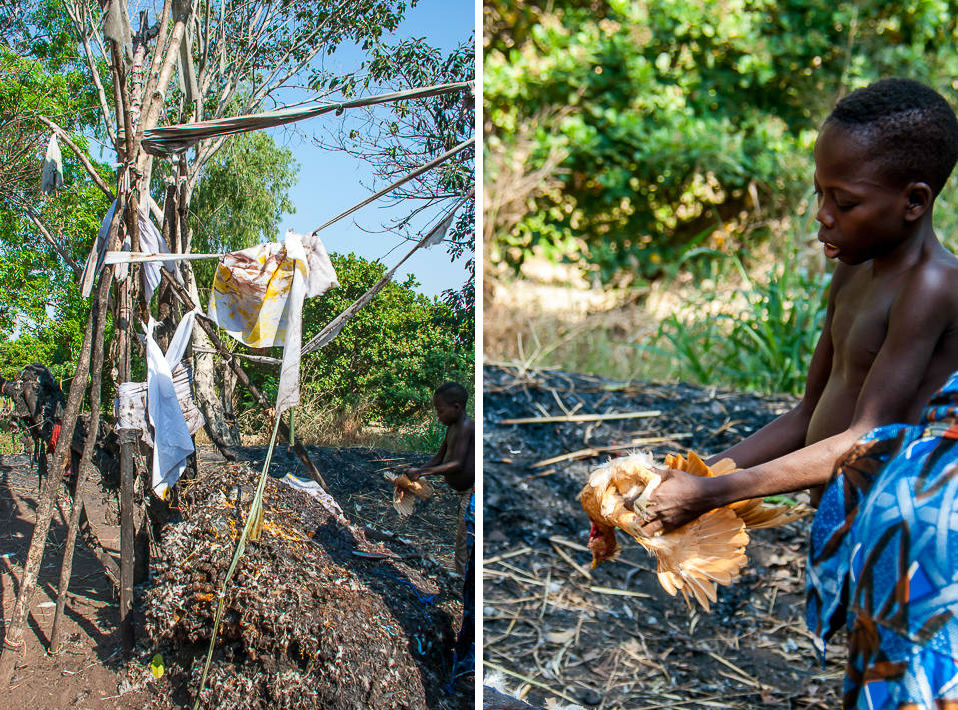
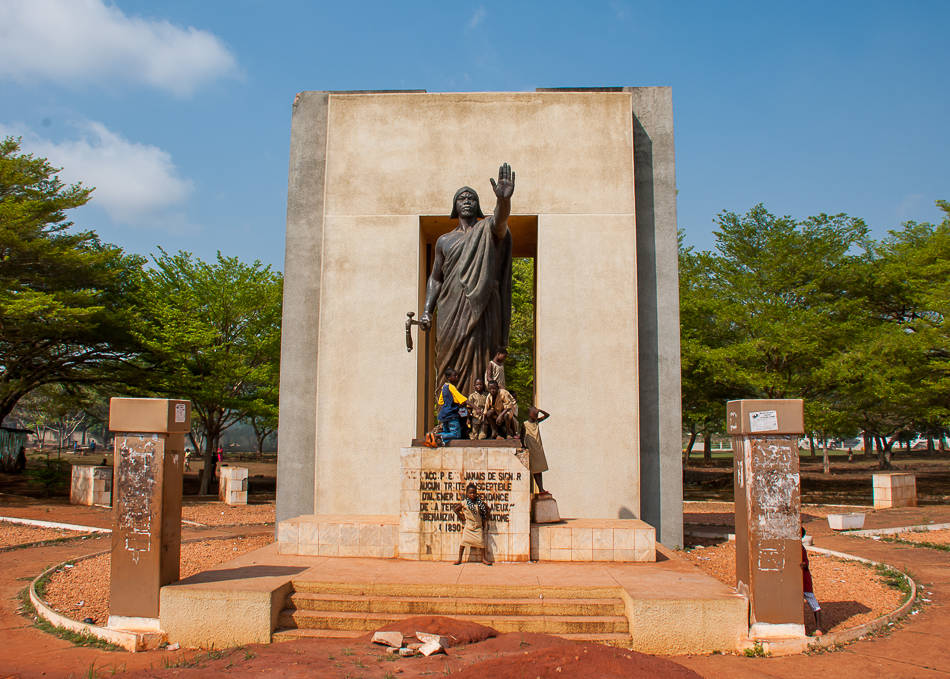
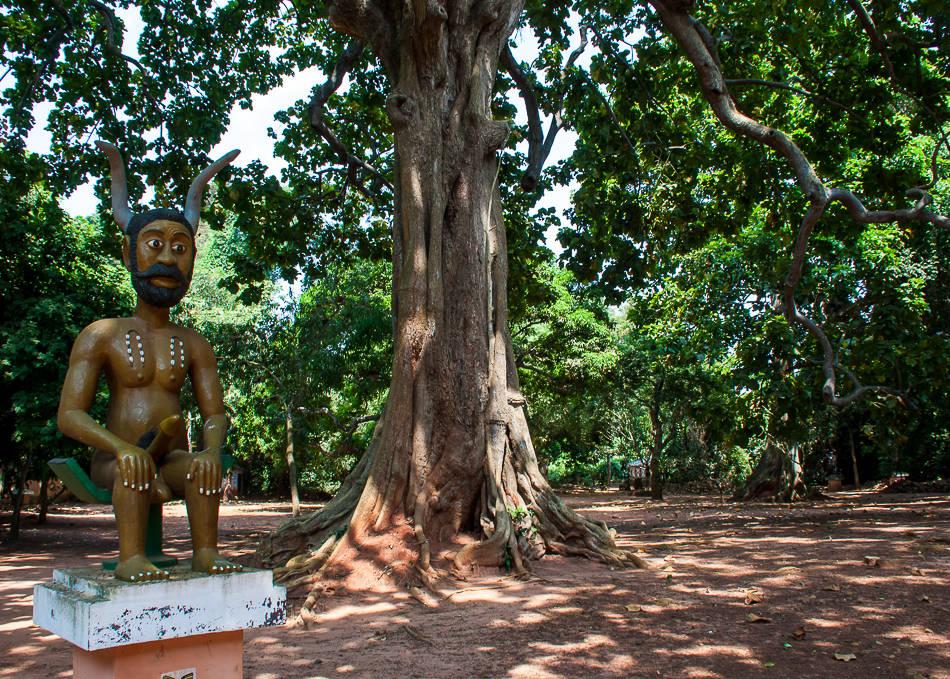
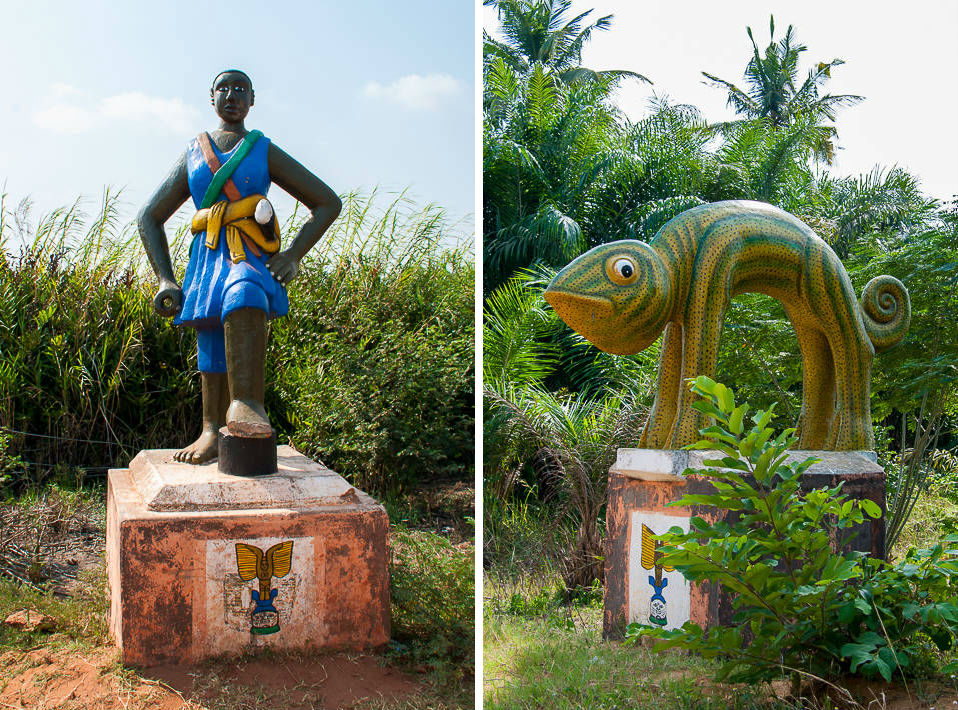
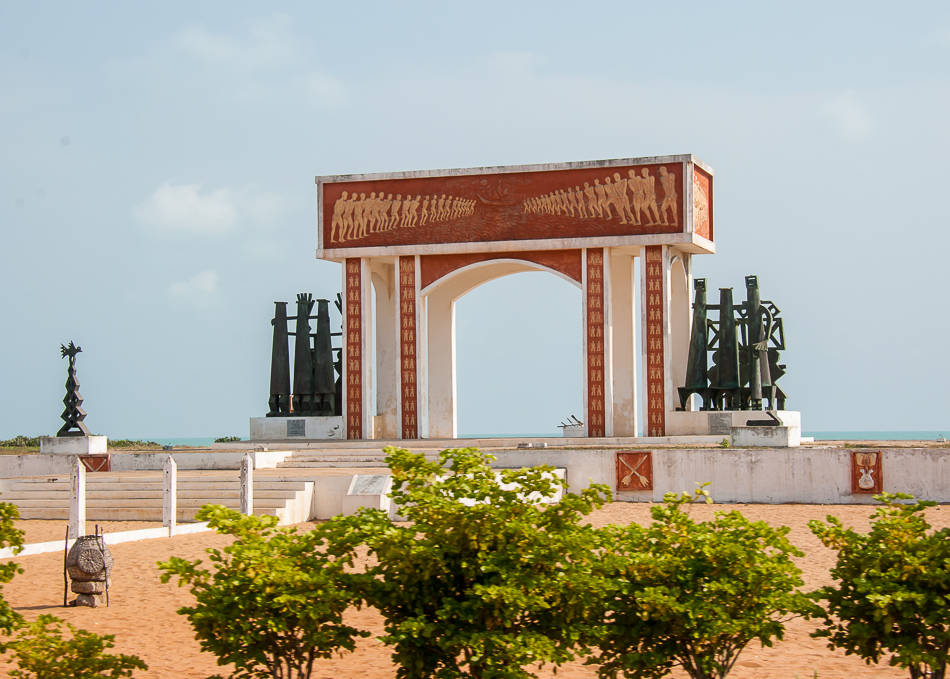


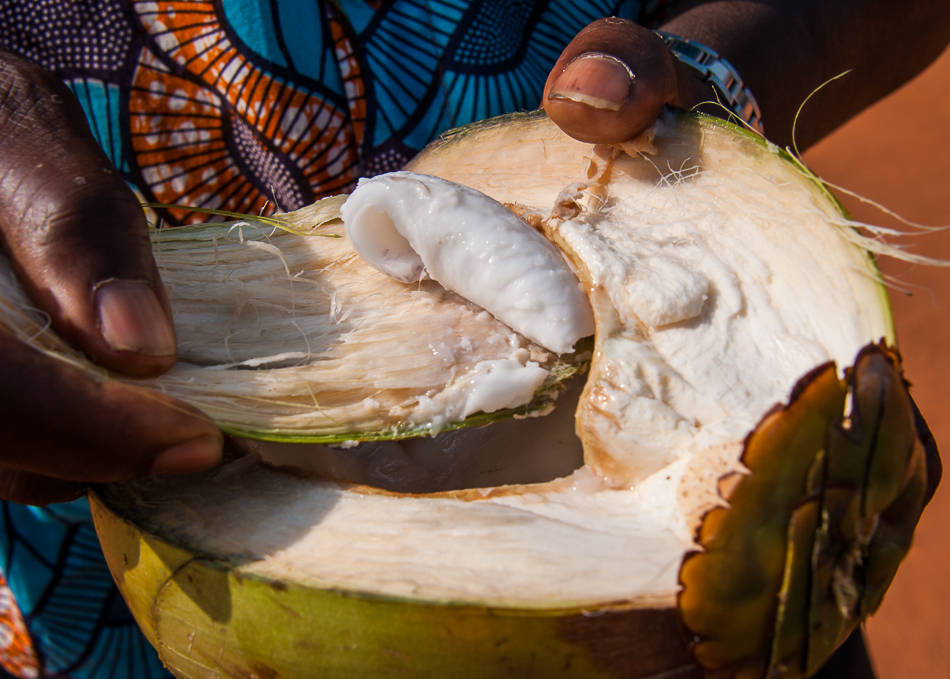
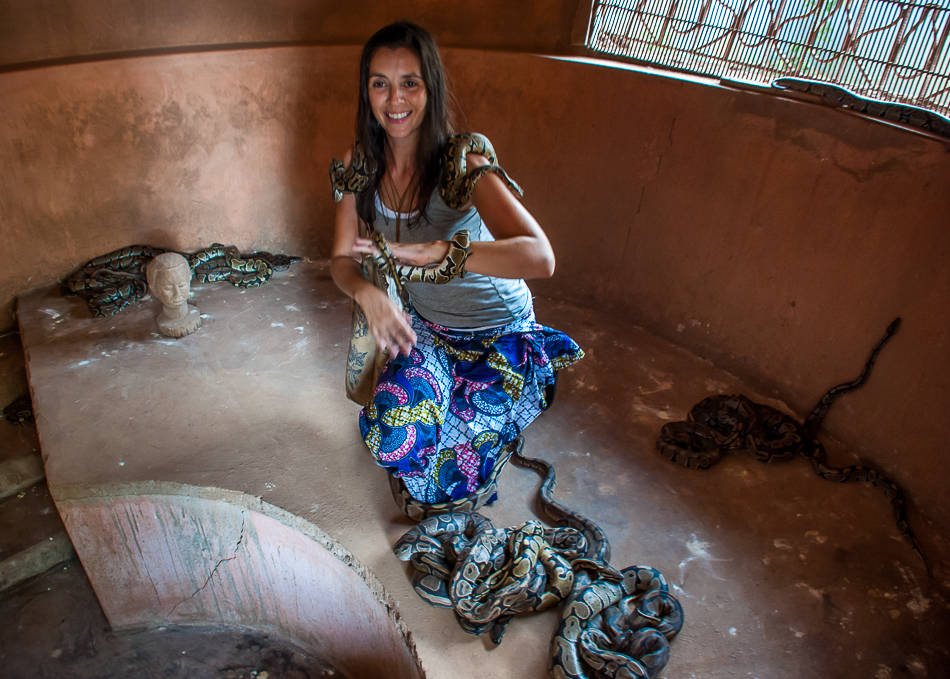

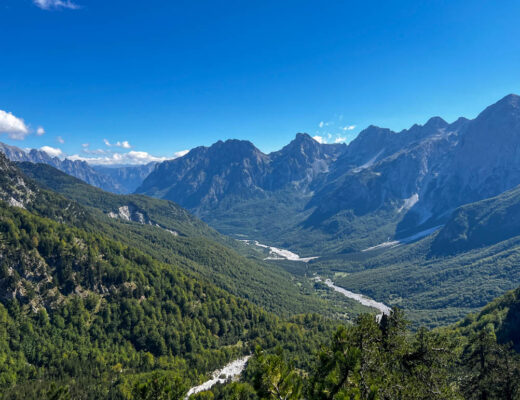
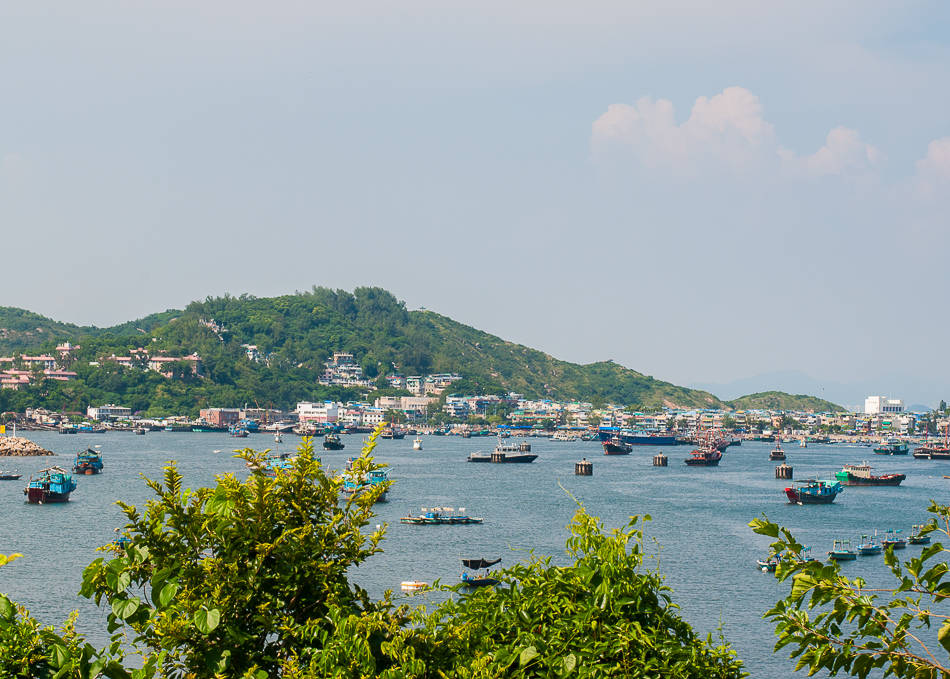
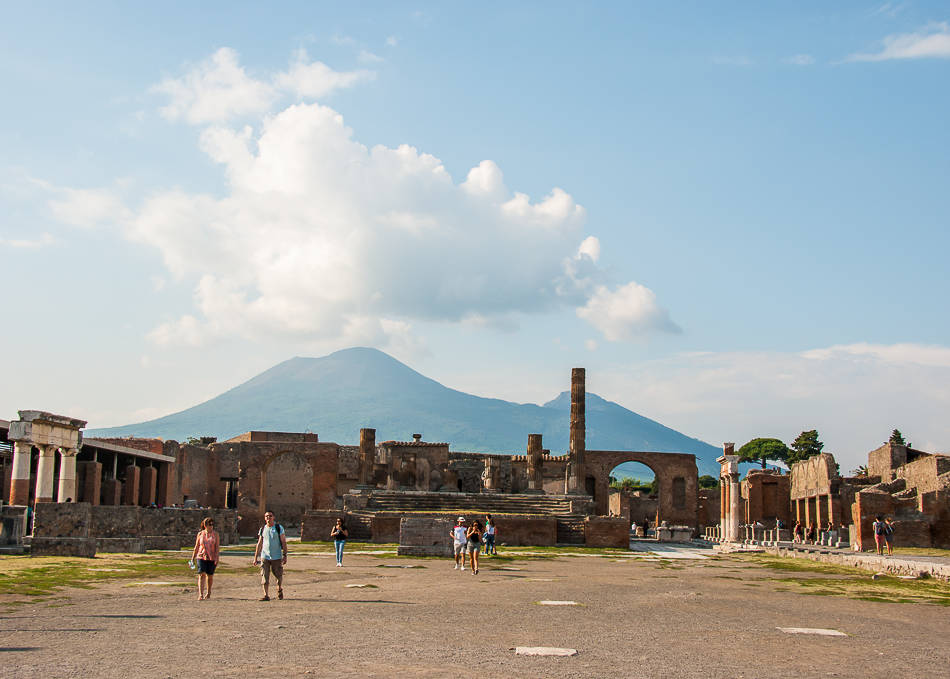


This fascinates me. I wonder how you communicated with the king. Living the tribal life,
I would not imagine many of those in small villages speak English. Perhaps you speak one of the four main African dialects.
Indeed, the king didn’t speak English though one of his (many) sons was acting as interpreter, having studied in a school outside the village to learn the language which is increasingly the case these days.
Hi Sandra! I just wanted to say thank you. I do not know of any North American blogger who has visited and written about my country and it is heartwarming to see part of my country through your eyes. I am really happy that you enjoyed your time there. And thank you for writing about it with sincerity.
Hi Yemissi!
Thank you for your kind words. Visiting Benin was such a beautiful and eye-opening experience which I will cherish for the rest of my life. I hope you get to visit it every once in a while!
Sandra, I ran across you while doing research about a trip I am getting ready to take to West Africa and wanted to ask you some advice about travelling in Benin, and generally getting around between Ghana, Togo and Benin. I’m also curious about your experience travelling in that area alone as a woman. Thanks so much! I am so inspired by your journeys! ~sara